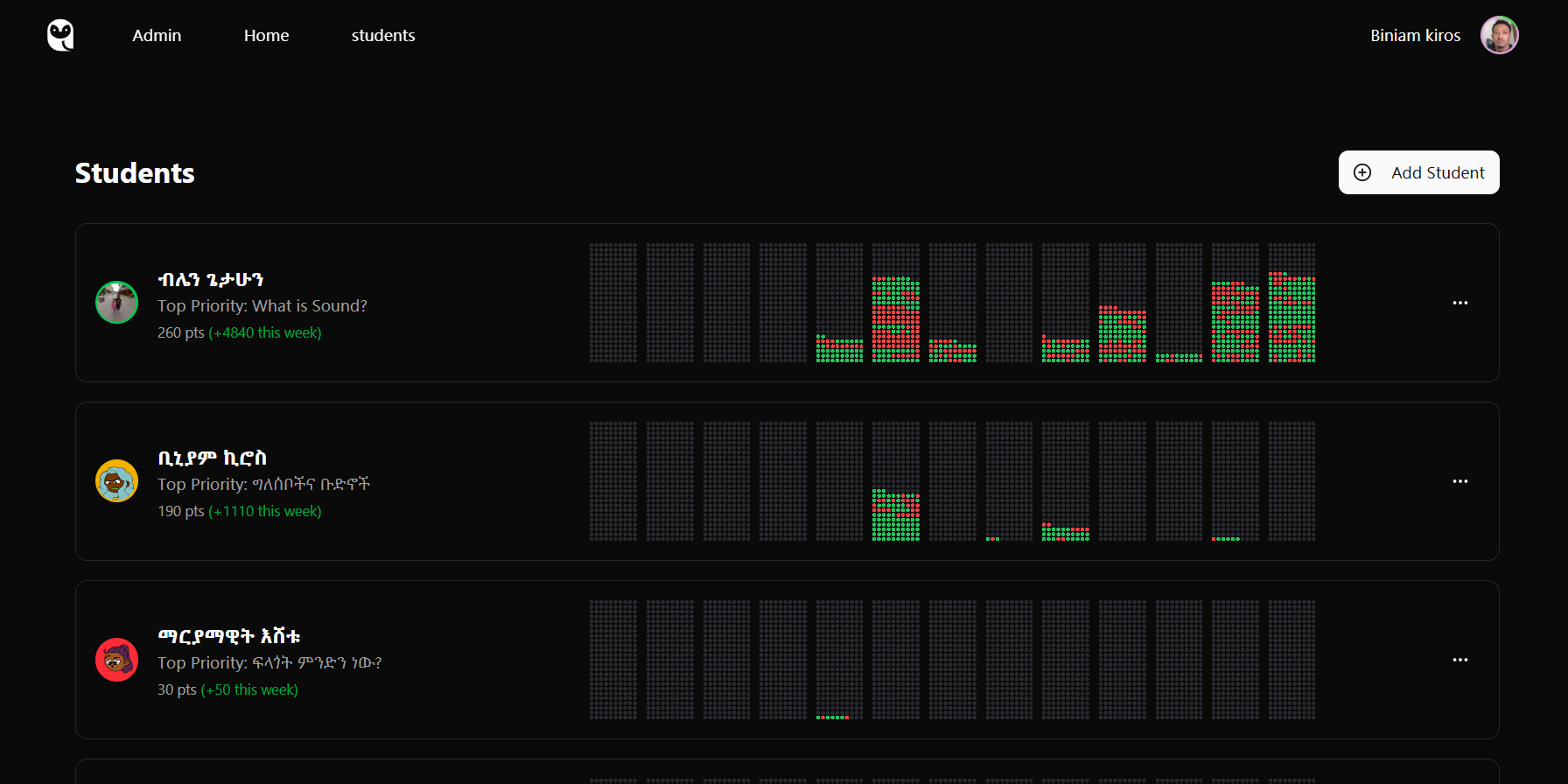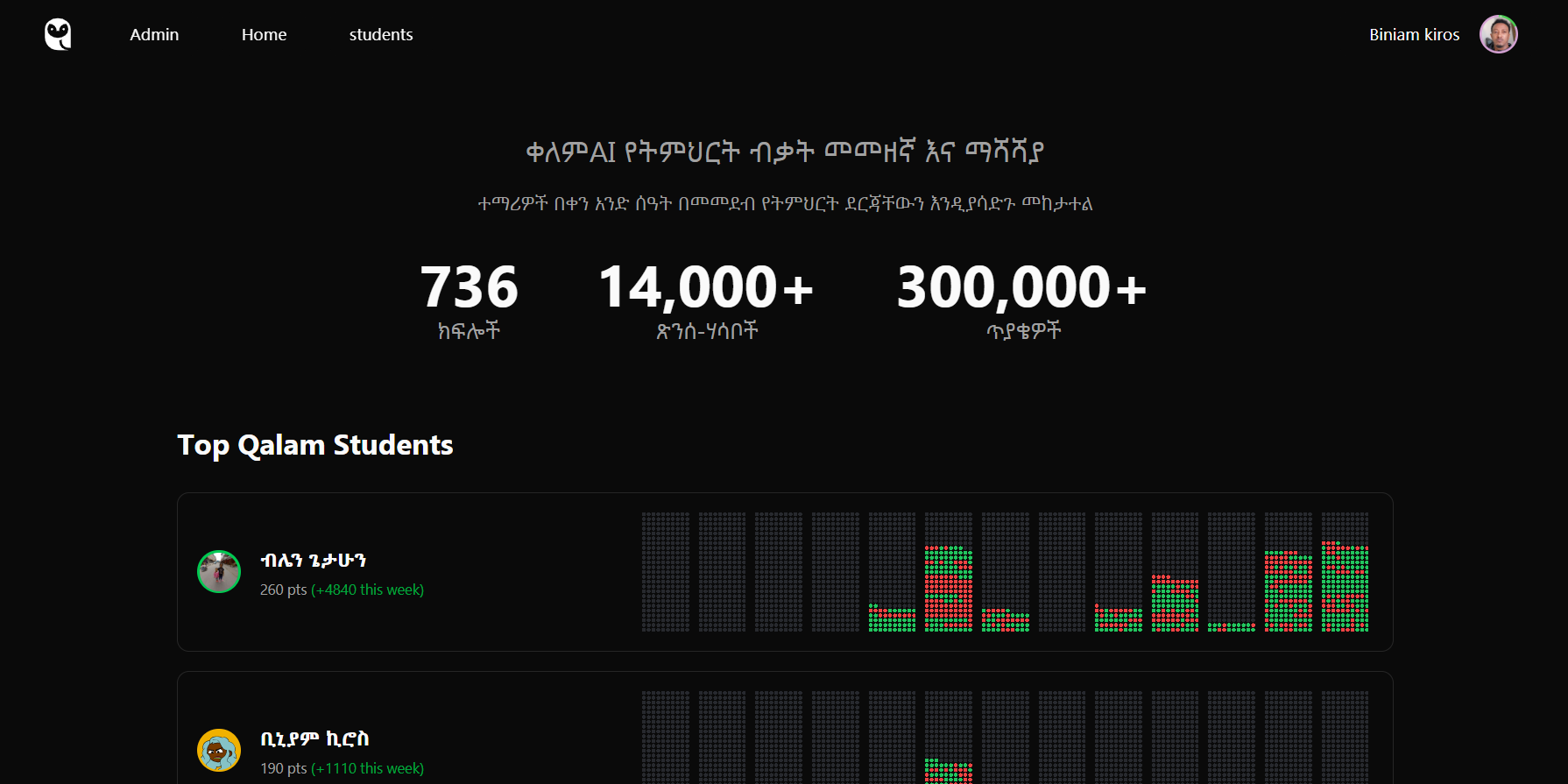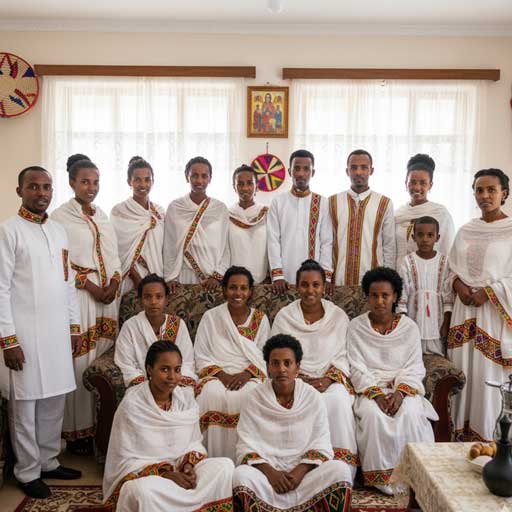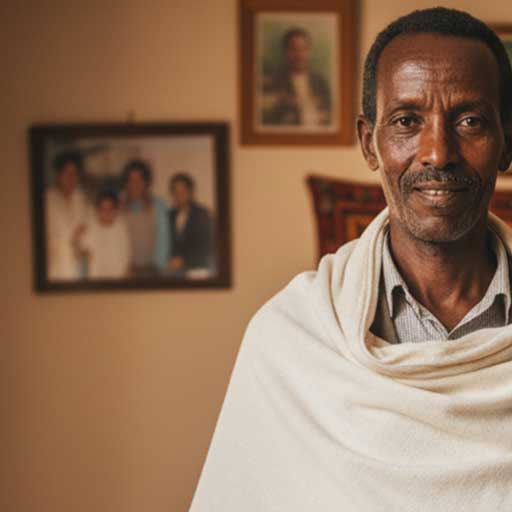make your child
Excel in Every Class.
Qalam delivers measurable results in just one hour a day, turning study time into a powerful engine for academic growth.
Join a Dedicated Community of Parents
Elias K. | Parent
"This is what education should feel like."

Selam B. | Student
"I finally get algebra."

Bereket A. | Parent
"The dashboard is a game-changer."

Eden T. | Parent
"Incredible peace of mind."

Mekdes Y. | Student
"More engaging than TikTok."

Samuel F. | Parent
"His grades improved in one month."

Join 3,000+ Parents & Students
A Universe of Knowledge
Classes
Concepts
Questions
budgeting and saving
taxation basics
local trade
factors of production
market equilibrium
traditional
efficiency analysis
inflation
recovery
policies
absolute advantage
banking
money supply
government spending
utility maximization
cost minimization
shocks propagation
instrumental variables
prospect theory
Nash equilibrium
goods and services
body-space awareness
personal mental mapping
biophysical regions
territorial sovereignty
climate system interactions
diastrophism
transportation
weather system analysis
species-environment relations
environmental impacts
resource location theory
territorial disputes
population density
projection systems
surface modeling
radar interferometry
field techniques
policy applications
personal milestones
family traditions
important local figures
economic development
civil rights
technological progress
feudal systems
scientific revolution
world conflicts
government systems
monetary systems
urban development
archival research
statistical history
postmodern analysis
environmental history
structuralism vs agency
why we need rules
local government
majority rule vs minority rights
Aristotle's polity
traditional conservatism
historical materialism
post-colonial theory
market socialism
dependency theory
classical realism
constructivism
voting decisions
collective movements
judicial systems
Western democracies
policy implementation
home interactions
laws
age roles
religious system
technology impacts
trend adoption
interactionism
qualitative analysis
subcultures
recognizing social patterns
good vs bad
time and space
qualia
what is knowledge?
coherentism
fallacies
necessity and possibility
death of the author
utilitarianism
moral realism vs anti-realism
allegory of the cave
mind-body dualism
sense and reference
heidegger
rights
libertarianism
constructive empiricism
reference
intensional logic
what is real?
habits and routines
attention and focus
classical conditioning
Vygotsky's theory
peer pressure
attitude formation
mood disorders
CBT
neurons and synapses
sensitive development windows
correlation vs causation
workplace behavior
basic human needs
puppet play
song structure
visual balance
narrative arcs
dance styles
film techniques
music notation
visual semiotics
textual analysis
artistic activism
theater manners
recognizing colors
telling picture stories
naming common objects
storytelling basics
speech organization
logical fallacies
cultural communication models
posture meanings
territoriality
basic signs and signals
cryptography basics
picture interpretation
digital communication
making sounds
Plants
Health & Nutrition
Biomes
DNA Basics
States
Acids/Bases
Forces
Electromagnetism
Plate Tectonics
Solar System
Data Analysis
Living vs Non-living
simple sustainability
simple commands
hardware components
algorithms
conditional logic
layered design
swarm systems
joining materials
gears and transfers
kinematic chains
decision trees
raw to finished
assembly lines
supply chain AIs
ergonomic design
contextual systems
identifying objects
technology in nature
testing and improving
basic electricity
load types
fluid mechanics principles
simple automations
system optimization
statistics for engineers
energy conversion
modeling approaches
constraint evaluation
sustainability considerations
literature review methods
presentation skills
materials around us
multiplication
estimation
divisibility rules
recognizing shapes
perimeter/area
equations of lines
sorting/classifying
equations
collecting data
measures of center
direct proofs
limits
multiple integrals
graph theory
counting objects
credit and debt
households
imports and exports
costs and benefits
product markets
command
welfare implications
unemployment
productivity
globalization
comparative advantage
interest rates
open market operations
budget deficits
indifference curves
profit maximization
calibration methods
difference-in-differences
choice architecture
bidding strategies
money basics
route memory (home-school-community)
neighborhood boundaries (natural/social)
cultural regions
core-periphery dynamics
global network systems
mechanical weathering
fluvial geomorphology
climate classification
anthropogenic biomes
linguistic landscapes
industrial location models
geopolitical theories
central place theory
thematic mapping techniques
network analysis
cognitive mapping
mixed methods
emerging paradigms
home history
local festivals
landmark history
country formation
social reforms
early river valleys
cross-cultural trade
colonial expansion
cold war
diplomatic relations
labor history
art movements
oral history methods
case studies
African history
maritime history
counterfactual analysis
power: who gets to decide?
regional government
autocracy
social contract theories
neoliberal conservatism
critique of capitalism
free market theory
trade systems
sovereignty
neorealism
war and conflict
political socialization
protest politics
elections
authoritarian regimes
welfare policy
public behavior
traditions
work roles
social classes
migration effects
crowd psychology
observation
quantitative analysis
cultural diffusion
people in groups
fairness
dualism
intentionality
truth and belief
testimony
syllogisms
what is beauty?
abstract objects
trolley problem
divine command theory
four causes
transcendental idealism
speech acts
dasein
rawls
scientific method
time's arrow
correspondence
asking questions
thinking about thinking
Freud and psychoanalysis
memory and forgetting
operant conditioning
Kohlberg's stages
stereotypes
cognitive dissonance
anxiety disorders
Rogers' approach
neurotransmitters
observation techniques
informed consent
health and wellness
family and relationships
freeze dance
costume design
musical harmony
painting techniques
literary devices
cultural dances
dramatic theory
sonic symbolism
avant-garde movements
technological integration
cultural celebrations
clapping rhythms
basic words and phrases
turn-taking in dialogue
structured presentations
audience analysis
discourse analysis
facial expressions
gesture cultures
environmental psychology
alphabets
data compression
simple audio messages
Marshall McLuhan concepts
recognizing voices
Animals
Reproduction
Structure
Inheritance
Periodic Table
Chemical Bonds
Energy
Heat Transfer
Earth's Layers
Stars
Models
Weather Patterns
on/off concepts
circuits introduction
software basics
logic structures
iterative processes
interface contracts
neural architectures
shape and function
mechanical advantage
dynamic systems
machine perception
manufacturing steps
automation basics
self-optimizing systems
ethical implications
biometric integration
simple tools
problem identification
forces and motion
gears and levers
support systems
electrical circuits
engineering data representation
dimensional analysis
control theory basics
life cycle analysis
simulation concepts
trade-off studies
multidisciplinary systems
experimental design
documentation standards
pushing and pulling forces
division
even/odd
GCD/LCM
properties of shapes
volume
conic sections
simple patterns
inequalities
simple graphs
data distributions
contradiction
derivatives
ODEs
mathematical algorithms
number sequence
personal investing
businesses
international trade
price determination
labor markets
market
national economy
expansion
innovation
WTO
economies of scale
investment
reserve requirements
sustainability
revealed preference
business cycles models
regression analysis
randomized control trials
default effects
winner's curse
financial decision-making
landmark navigation (natural/human-made)
municipal infrastructure
economic regions
national identity formation
tectonic landforms
chemical weathering
coastal processes
climate change mechanisms
land use patterns
sacred geographies
global production networks
demographics
world cities
dynamic visualization
multispectral analysis
scale transitions
spatial statistics
my daily routine
school history
community stories
indigenous heritage
constitutional history
agricultural development
classical empires
plague and migration
industrial revolution
rise of globalization
historical political theory
class systems
intellectual history
artifact analysis
historical schools
Asian history
history of science
what is a community?
fairness and justice
national government
hybrid systems
classical liberalism
utopian socialism
liberal feminism
welfare capitalism
international financial institutions
anarchy in world politics
liberal institutionalism
international law
ideology and beliefs
executives
policy-making
developing systems
environmental policy
cultural events
basic hierarchies
family institution
power structures
generation shifts
functionalism
interviews
belief systems
economic networks
family structures
rules and freedom
materialism
mental causation
radical doubt
epistemic injustice
propositional logic
art and meaning
musical platonism
categorical imperative
socrates
aristotle's virtue ethics
synthetic a priori
existentialism
temporality
nozick
falsifiability
quantum interpretations
deflationary
big and small ideas
media influence
Pavlov and conditioning
simple decision making
observational learning
ethical reasoning
conformity
emotions and coping
DSM classifications
existential therapy
stress response system
surveys and questionnaires
replication crisis
feelings and emotions
color mixing
comic panels
choreographed steps
stage presence
instrument families
digital art tools
publishing formats
kinesiology basics
performance semiotics
interdisciplinary art
museum visits
book discussions
making faces
asking simple questions
expressing feelings
debate formats
persuasive techniques
mass communication theory
basic gestures
eye contact norms
recognizing symbols
logographic systems
linguistic relativity
film language
media ecology
simple greetings
Microorganisms
Ecosystems
Division (Cells)
Evolution
Types
Reaction Rates
Sound
Laws of thermodynamics
Weather
Universe
Observation Skills
natural vs man-made
buttons and screens
conductors/insulators
networks introduction
problem decomposition
functions and modules
consensus mechanisms
qubit operations
simple constructions
efficiency calculations
actuation methods
knowledge representation
quality concepts
IoT integration
tool holding
control layouts
BCI principles
basic materials
brainstorming solutions
energy forms
pulleys and wheels
stability principles
material science fundamentals
input-process-output
basic calculations
signal processing concepts
resource efficiency
validation techniques
safety factors
complex problem solving
research data interpretation
shapes and structures
addition
place value
primes/composites
modular arithmetic
symmetry
Cartesian plane
dot/cross products
input/output machines
polynomials
likely/unlikely
hypothesis testing
predicate logic
integrals
PDEs
complexity theory
comparing quantities
insurance and risk management
government
resources
elasticity
market failures
mixed
GDP
recession
indicators
regional blocs
network effects
central banks
taxation
crowding out
production functions
DSGE models
time series
bounded rationality
prisoner's dilemma
needs and wants
buying and selling
cardinal/intermediate directions
urban/rural transition zones
political regions
plate tectonic theory
volcanic systems
soil systems
glacial systems
biome distributions
resource management
cultural hearths
boundary evolution
migration patterns
urban sustainability
point pattern analysis
LiDAR point clouds
pattern recognition
ethical frameworks
family events timeline
neighborhood changes
town origins
settlement patterns
independence struggle
industrialization
religious foundations
reformation
nationalism
digital transformation
trade networks
gender systems
popular culture
comparative history
philosophy of history
Latin American history
historical causality
leaders and followers
rights vs responsibilities
elections and representation
Plato's philosopher kings
modern welfare liberalism
democratic socialism
radical feminism
centrally planned economies
modernization theory
balance of power
democratic peace theory
human rights
interest groups
legislatures
political violence
agenda-setting
foreign policy
manners
gender roles
education system
inequality mechanisms
social movements
conflict theory
survey research
value transmission
transnational institutions
community roles
what exists?
hard problem of consciousness
non-reductive physicalism
foundationalism
good arguments
possible worlds
authorial intent
virtue ethics
universalizability
theory of forms
cogito
wittgenstein
husserl
justice
egalitarianism
instrumentalism
meaning
possible worlds semantics
right and wrong
sleep and dreams
Bandura and social learning
language development
Piaget's stages
group dynamics
obedience
stress and anxiety
psychodynamic therapy
brain parts and functions
learning and brain changes
variables and controls
education and learning
senses and perception
keeping beat
shape composition
poetry basics
movement flow
theatrical genres
audio production
color psychology
literary criticism
movement analysis
cultural preservation
concert etiquette
media critiques
moving to music
answering simple questions
making requests
interview techniques
classical rhetoric
semiotics
personal space awareness
spatial relationships
drawing simple messages
notation systems
book handling
advertising techniques
network society
pointing to express needs
Body Systems
Food Webs
Energy (photosynthesis/respiration)
Atoms
Balancing Equations
Newton's Laws
Light
Rocks
Climate
Experiments
Properties of Materials
renewable resources
input vs output
simple sensors
data representation
sequential execution
object-oriented thinking
fault tolerance
superposition principles
levers and pulleys
energy types
sensor integration
learning mechanisms
sustainable design
digital twins
safety rules
feedback systems
cognitive augmentation
everyday machines
prototyping with everyday materials
material properties
simple mechanisms
thermodynamics basics
algorithms and logic
feedback loops
graphical methods
stress-strain relationships
pollution prevention
requirements analysis
professional responsibility
innovation processes
report writing
simple machines
subtraction
multi-digit operations
factors/multiples
Diophantine equations
angles
transformations
n-dimensional spaces
linear relationships
group theory
basic probability
logical puzzles
ZFC axioms
partial derivatives
combinatorics
recognizing numbers
An Interface for Every User
Powerful, intuitive tools for both students and parents.
The Student Interface
A focused, distraction-free environment where learning happens.

The Parent Dashboard
Clear insights, zero intrusion. Monitor progress at a glance.


A Smarter Way to Study
See the difference AI-powered, personalized learning makes.
Traditional Studying
- ✗Passive reading for hours
- ✗Weeks or months to master
- ✗One-size-fits-all curriculum
- ✗High risk of falling behind
Qalam
- ✓Active, AI-driven practice
- ✓Concepts mastered in days
- ✓Tailored to each student's pace
- ✓Gaps are identified and fixed instantly
The Student Journey
A seamless, intelligent process from start to mastery.
Personalized Pathway Creation
Qalam begins with an exam for each concept and assesses to pinpoint exact knowledge gaps and strengths, creating a unique learning pathway.
Concept-by-Concept
Students focus on a single concept with AI tutor, tackling adaptive questions until they achieve a 20:1 pass ratio, ensuring rock-solid understanding.
The Parent Dashboard
A simple intuitive dashboard offers a clear, real-time view of activity, mastered subjects, and progress trends.
Real Stories, Real Results

"Calculus was tough, but I went from C+ to A- in one semester. Qalam pinpoints my weak spots perfectly."
Dawit Solomon | Student, Grade 10
"I see exactly where my daughter shines or struggles. Qalam gives me total peace of mind."
Hanna Girma | Parent
"No more homework fights. My son is now excited to learn with Qalam."
Abebe Tesfaye | Parent
"Algebra makes sense now. Qalam picks questions that fit me perfectly."
Liya Mengistu | Student, Grade 8
"Physics was a mess, but Qalam’s clear explanations got me to an A."
Yonas Kebede | Student, Grade 11
"Qalam helps my kids stay on track. It’s like having a tutor at home."
Selam Worku | Parent
"I used to hate math, but Qalam makes it fun and easy to understand."
Tsehay Bekele | Student, Grade 9
"My daughter’s grades improved fast. Qalam is a game-changer for us."
Elias Desta | Parent
"Qalam’s practice questions prepared me perfectly for my exams."
Mihret Alemayehu | Student, Grade 12
"Qalam shows me my son’s progress clearly. It’s stress-free parenting."
Fikru Tadesse | Parent
"Calculus was tough, but I went from C+ to A- in one semester. Qalam pinpoints my weak spots perfectly."
Dawit Solomon | Student, Grade 10
"I see exactly where my daughter shines or struggles. Qalam gives me total peace of mind."
Hanna Girma | Parent

"I aced chemistry thanks to Qalam’s targeted practice questions."
Betelhem Asrat | Student, Grade 10
"Qalam turned my kids’ study time into something they look forward to."
Getachew Hailu | Parent
"Biology is clearer now. Qalam’s explanations are super helpful."
Kalkidan Yimer | Student, Grade 11
"Qalam makes learning engaging. My son’s confidence has soared."
Mesfin Gebremichael | Parent
"I finally understand geometry. Qalam feels like it knows my brain."
Aster Demissie | Student, Grade 9
"Qalam’s insights help me support my kids’ learning effectively."
Tewodros Lemma | Parent
"Qalam’s exam prep got me ready for university entrance tests."
Rahel Tsegaye | Student, Grade 12
"Qalam makes education exciting for my daughter. No more stress."
Solomon Abebe | Parent
"English grammar is easy now. Qalam’s exercises are spot-on."
Eden Mekonnen | Student, Grade 8
"Qalam’s progress tracking keeps my kids motivated and on track."
Zerihun Adane | Parent
"No more homework fights. My son is now excited to learn with Qalam."
Abebe Tesfaye | Parent
"Algebra makes sense now. Qalam picks questions that fit me perfectly."
Liya Mengistu | Student, Grade 8
Frequently Asked Questions
Our dedicated Parent Dashboard provides a real-time, easy-to-understand overview of your child's activity, concepts mastered, and areas where they might be struggling. You can stay informed without being intrusive.
Absolutely. With 763 classes covering everything from Grade 1 math to advanced calculus and literature, our content is designed to be internationally neutral and comprehensive, aligning with most educational standards worldwide.
That's the core of our system! Qalam's mastery-based approach means a student continues to receive adaptive questions on a single concept until they truly understand it (a 20:1 pass ratio). This ensures they build a solid foundation before moving on.
We recommend a focused session of 45-60 minutes per day for optimal results. Our platform is designed for efficiency, turning that time into measurable academic progress.
Ready to Evolve?
Give your child the advantage of truly personalized learning. Start the journey with Qalam today.
Get Started